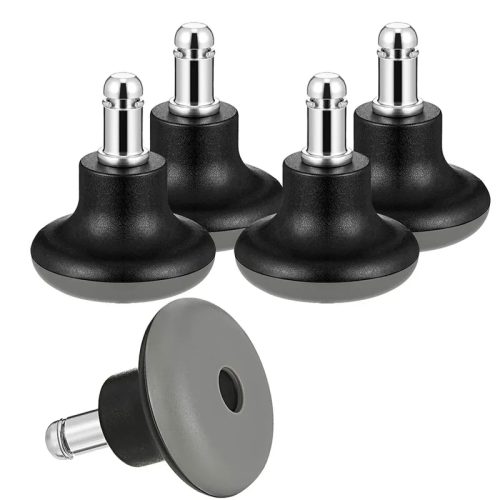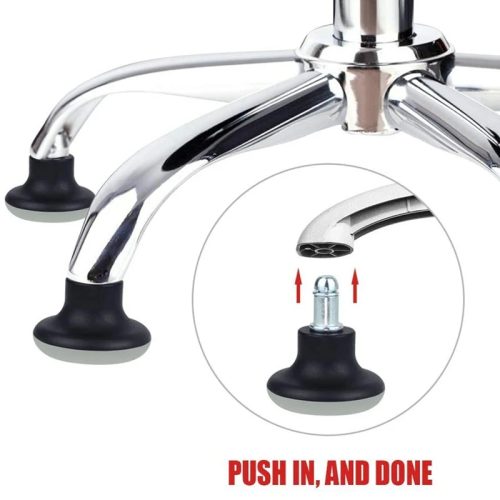Introduction
In the modern workplace, office chairs are an essential piece of furniture, and the often-overlooked heroes that keep these chairs mobile are the casters. In this comprehensive guide, we will delve into the world of office chair casters, exploring their types, materials, and maintenance to help you make informed decisions and extend the lifespan of your office chair.
Part 1: Types of Office Chair Casters
- Hard Floor Casters: If your office has hard flooring like wood, tile, or concrete, hard floor casters are your best bet. They are typically made from materials like nylon or polyurethane, providing a smooth glide while preventing damage to the floor.
- Carpet Casters: For carpeted offices, you should opt for carpet casters. These casters are designed to offer better grip and stability on soft surfaces. They are often made from rubber.
- Universal Casters: If you have a mixed flooring environment, universal casters are versatile options. They can perform well on both hard and soft surfaces, making them a popular choice for many offices.
- Locking Casters: Locking casters come with a mechanism that allows you to fix the chair in place. They are useful if you need stability when sitting and mobility when you stand up.
Part 2: Caster Materials
- Nylon Casters: Nylon casters are known for their durability and resistance to wear and tear. They are great for hard floors and are relatively affordable.
- Polyurethane Casters: Polyurethane casters are a popular choice due to their combination of durability, smooth movement, and floor protection. They work well on both hard and soft surfaces.
- Rubber Casters: Rubber casters are excellent for carpeted floors. They provide a solid grip and are quiet, but they may wear out faster on hard surfaces.
- Metal Casters: Metal casters, usually made of stainless steel, offer exceptional strength and durability. They are suitable for heavy-duty use but may not be ideal for all floor types due to their weight and potential to scratch.
Part 3: Maintenance and Care
Proper maintenance can extend the life of your office chair casters and keep your chair functioning smoothly:
- Regular Cleaning: Dust, debris, and hair can accumulate on casters, hindering their performance. Regularly clean the casters with a soft brush or cloth.
- Lubrication: Lubricate the caster wheels with silicone or graphite-based lubricants to reduce friction and noise.
- Tighten Loose Parts: Check for loose screws or bolts on the casters and the chair base. Tighten them to prevent wobbling.
- Replace Worn Casters: If your casters are damaged or worn, consider replacing them. This is a cost-effective way to restore mobility and prevent further damage to your floors.
- Check Weight Limits: Ensure that the casters you choose can support the weight of the user and the chair itself to prevent premature wear and potential accidents.
Conclusion
Choosing the right office chair casters is crucial for your comfort, productivity, and floor protection. Understanding the types, materials, and maintenance requirements will help you make an informed decision and prolong the life of your office chair. By taking good care of your casters, you can enjoy a smooth and hassle-free experience in your workspace for years to come.


